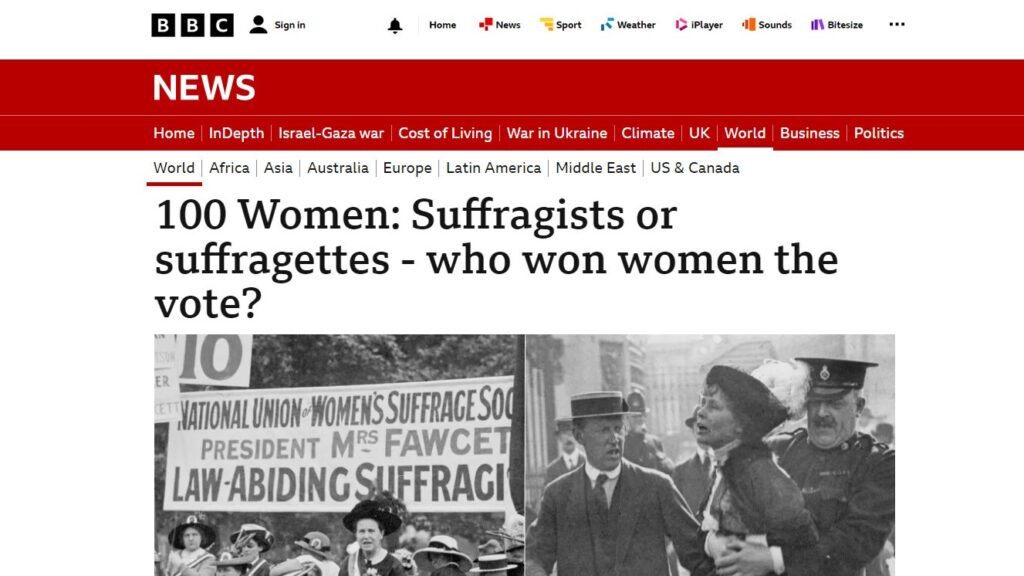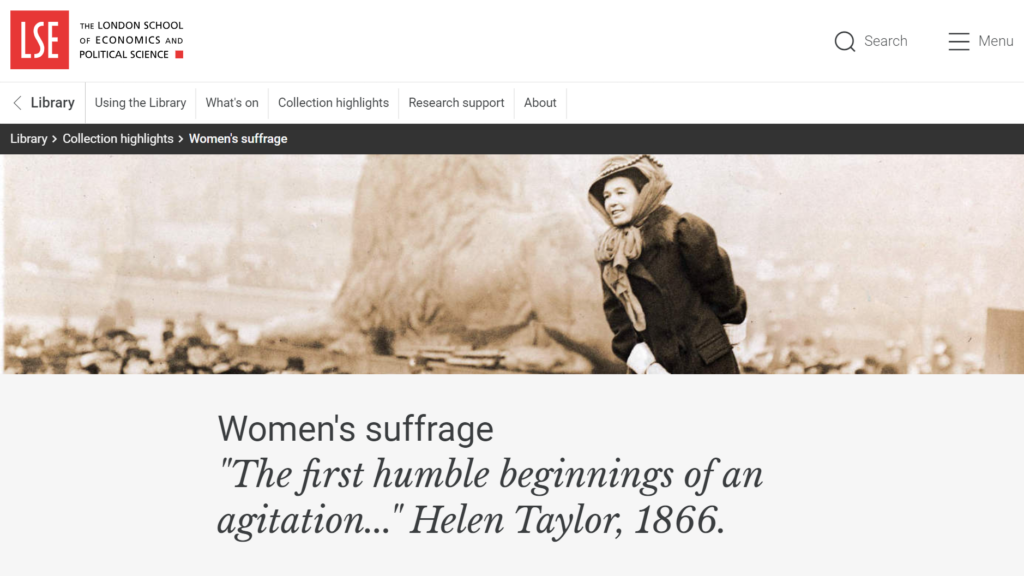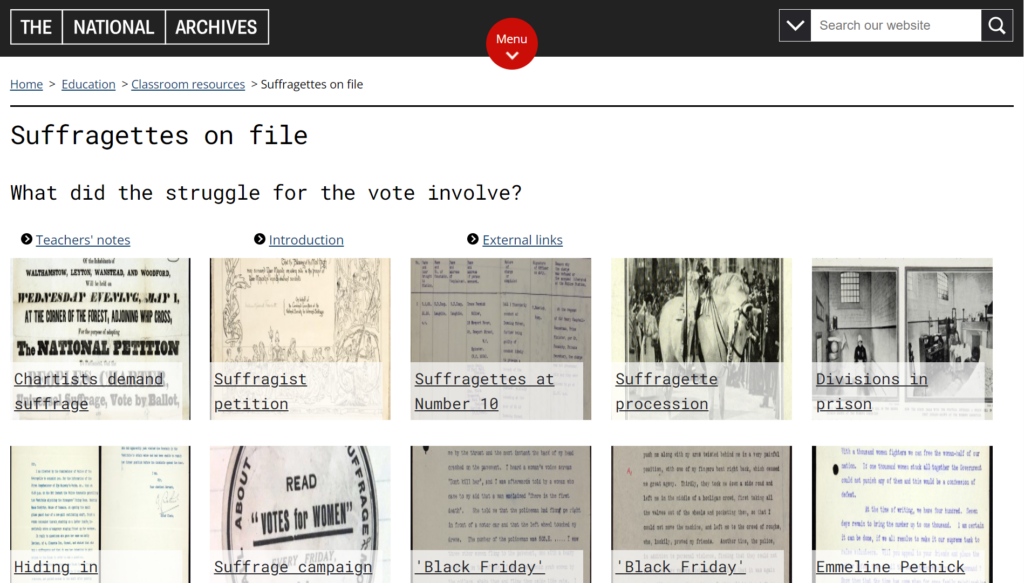Votes For Women
Category: Equality, History
Introduction
Prior to the Great Reform Act of 1832, women had not been expressly disenfranchised, although in practical terms only very few wealthy women had the vote. The 1832 Act explicitly restricted the vote to adult males who met the property qualification; a total of only 650,000 men or around 7% of the population.
There were many women active within the Chartist movement and many leading Chartists believed that votes for women should have been part of their platform, but the prevailing view was that this would be seen as too radical and a tactical mistake. The Second Reform Act of 1867 further extended the franchise, although not to women nor men who didn’t meet the amended property qualification. Even after the act, some 40% of adult males and all women were still disqualified from voting.
The National Society for Women’s Suffrage was formed in 1872. After a series of splits and mergers it became the National Union of Women Suffrage Societies (NUWSS) in 1897. The NUWSS was committed to achieving its objectives through democratic and peaceful means. The Women’s Social and Political Union (WSPU) was formed in 1903. Frustrated by the lack of parliamentary progress, they undertook a programme of increasingly militant protests under the banner of “deeds not words.”
Women’s Suffrage Campaign From 1866
A selection of videos from History Hub discussing the key issues and events of the Women’s Suffrage campaign.
Suffragists & Suffragettes
This BBC article considers the differing tactics of the Suffragists and Suffragettes. Click here.
Emmeline Pankhurst Speeches
Leader of the WSPU Emmeline Pankhurst was a very effective public speaker. The following are examples of her oratory, recorded by an actor.
Suffragette Militancy
The WSPU’s campaigns were credited with generating the publicity that re-energised the women’s suffrage debate but their militant campaign was controversial. Historians continue to debate whether or not it could be classed as terrorism and whether it helped or hindered the cause of women’s suffrage.
The WPSU was formed in 1903, nearly 40 years into the campaign. The matter had regularly been debated in parliament and had gained significant support, but although some concessions had been gained in local elections, the government remained stubbornly resistant to granting women the right to participate in parliamentary elections.
The WSPU was not a democratic organisation and was tightly controlled by Emmeline Pankhurst and her daughters, Christabel, Sylvia and Adela. They argued that direct action was necessary and adopted the motto “deeds, not words.” Initially they focused on publicity campaigns and large-scale marches but from 1905 their members were increasingly willing to break the law. This mostly involved disrupting meetings and damage to property, such as breaking windows, setting light to empty buildings and destroying post boxes. This has been characterised as vandalism rather than terrorism but members of WPSU were quickly targeted by Special Branch officers, with a separate suffragette section being formed in 1909. Even while protesting peacefully the women faced violence from police and prison guards, which was often of a sexual nature.
Witnesses reported that Emmeline gave strict orders that, “not a cat or a canary was to be killed: no life,” but from 1912, both the campaign and the language they used to describe it, intensified. The campaign of 1912 – 1914 included the use arson, letter bombs, shrapnel bombs and assassination attempts. Targets included government offices, churches, homes of MPs who opposed women’s suffrage, post offices, railways stations, trains and signals. Responsibility for these acts was claimed in the pages of the WSPU newspaper The Suffragette and they resulted in 4 fatalities, with more injured.
Many WSPU members, including Sylvia and Adela Pankhurst, who opposed the escalation of violence, either resigned or were expelled from the WSPU. The issue was still unresolved when, at the outbreak of war in August 1914, Emmeline called a halt to the campaign in order to aid the war effort.
The following videos and reports explore the issue of militancy in more detail.
Further Resources
The following collections offer a wealth of information on the Women’s Suffrage campaign for those interested in learning more about the subject.
The Women’s Library Collection: LSE
The LSE Women’s Suffrage Collection contains a vast selection of reports, interviews and artefacts from the women’s suffrage movement. Click Here.
London Museum: The Suffragettes
The London Museum has collected information on key activists and events from the Suffragette movement. Click here.
Suffragettes on File: National Archives
A wide selection of documents, including material from the Home Office, Metropolitan Police and the WSPU office. Click here







